SSLtech
Well-known member
So I had a complaint of a U87 with "noise" issues.
If you want to clean a capsule, I accept no responsibility for any damage that may occur. Cleaning capsules is a "last resort" when all else fails. It should NEVER be undertaken as a "routine" procedure, and -if tried as a regular "routine" will be more likely to cause mroe harm than good.
OLD CAPSULES MAY LOSE GOLD. Don't do it unless your only other option is tossing the capsule in the garbage!
Now, if you still want to carry on...
Here's what you need to clean one:
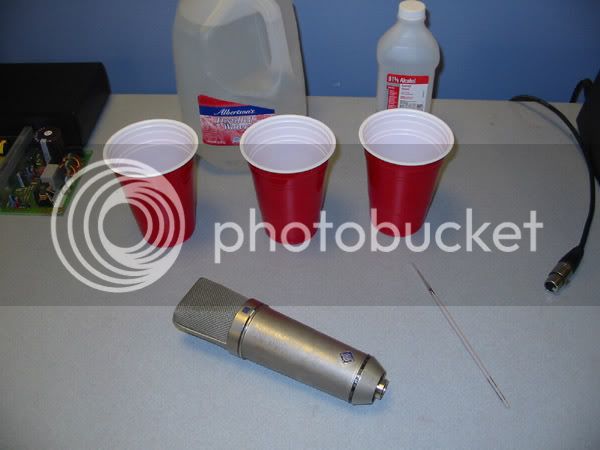
The mic, three CLEAN plastic cups, some DISTILLED water, some high-purity (91%+) alcohol, and a VERY soft, VERY gentle sable-bristle brush.
Oh... and a CLEAR work surface! Steady hands, and some patience. This may take an hour or two...
Here's the capsule to be cleaned:
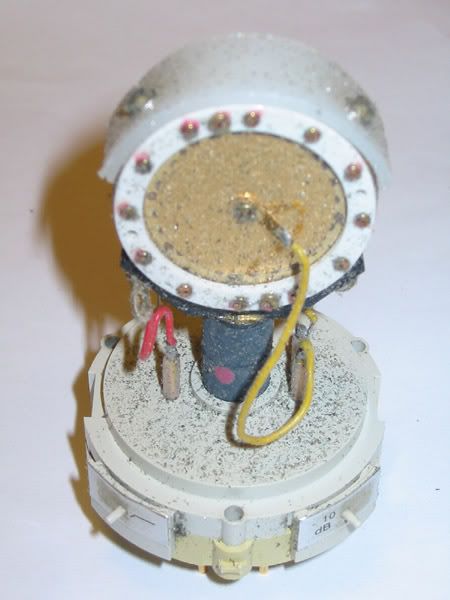
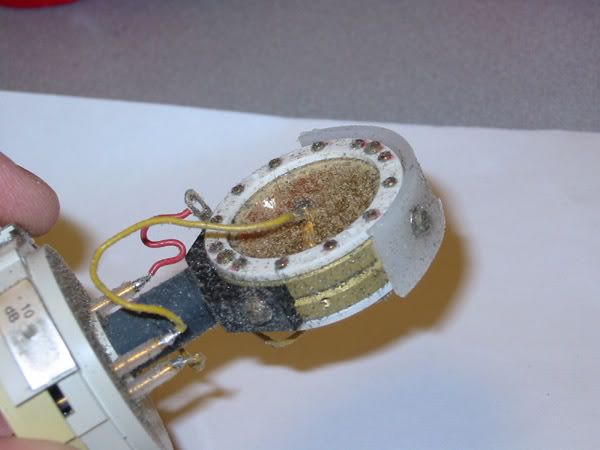
Pretty nasty, huh?
Here's another view without flash:

Here's the view of the other diaphragm... not much better there, either!
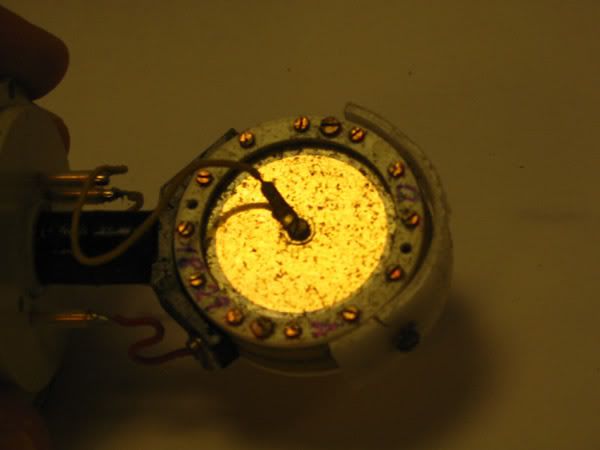
So... here's how I personally do it:
In the first of the threee cups, I mix about a 1:3 concentration of alcohol : distilled water. the other two cups are distilled water ONLY.
At first, try water on its own, to loosen the dirt. Use the sable brush, touching GENTLY... and ALWAYS watching the 'reflection' of the gold surface to see how much pressure you're applying. NEVER press too hard, NEVER have the metal "collar" of the brush any closer than 2/3rds of the length of the bristles from the capsule. (if the metal collar touches the diaphragm, it may as well be all over!)
If there's some greasy buildup which makes the water 'ball-up" and run off, without removing the dirt, try the alcohol solution. Either way, ALWAYS rinse the brush in ONE of the two pure-water cups, (to put the dirt in the cup) and use the OTHER pure-water cup to rinse the brush, prior to returning to the capsule. That way the dirt shouldn't be carried BACK to the capsule you just cleaned.
Here's the work in progress:

NEVER allow the brush to "dig" into the capsule. This takes patience... patience... patience!
Here's how the water should look... a little bit of "sheeting" without too much "balling-up".
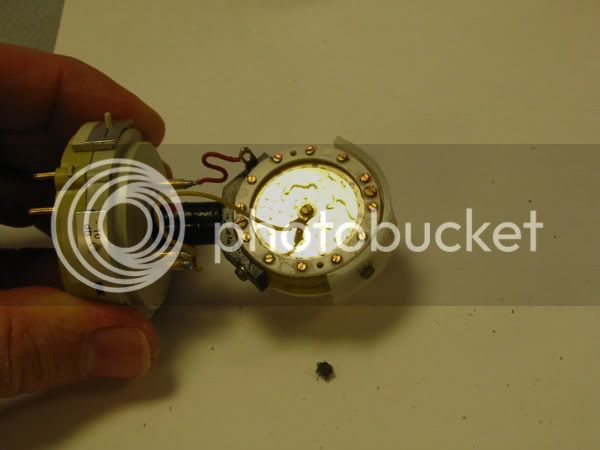
Okay, in the end, try "steering" the clean water to the edge of the capsule, and lift it off. Alternate the brush between the capsule edge and a CLEAN... LINT-FREE cloth, like "Texwipe" or similar.
remember, with the type of casule which has a clear, unplated ring around the edge, the clear ring is MORE important in terms of cleanliness than the gold disc itself! -It's counter-intuitive, but VERY important that the ring is clean.
Okay... so here's what it should look like when the dirt is gone:
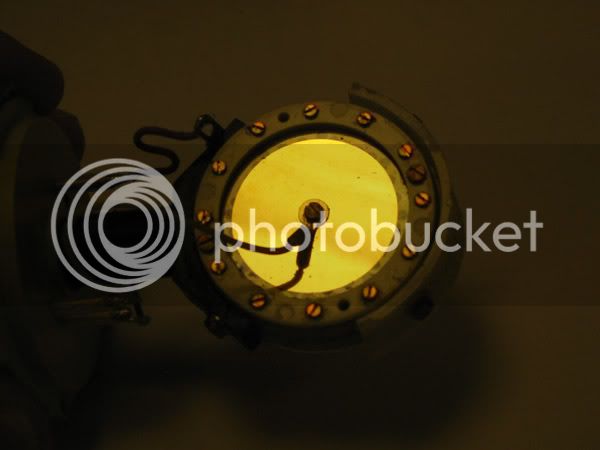
...and here's what the cups looked like when I'd finished with this particular capsule:
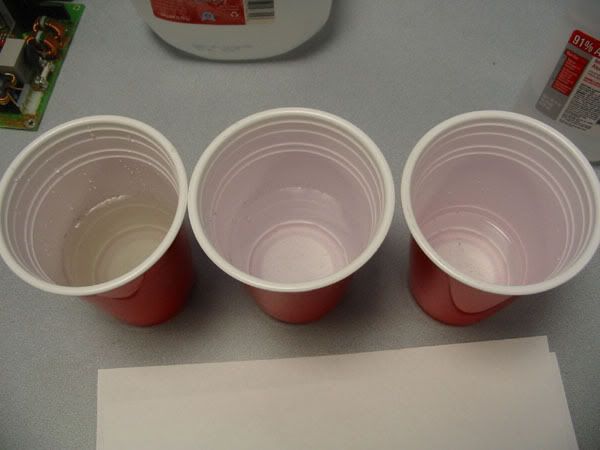
That's all I can think to write for now...
S'late...
Keith
If you want to clean a capsule, I accept no responsibility for any damage that may occur. Cleaning capsules is a "last resort" when all else fails. It should NEVER be undertaken as a "routine" procedure, and -if tried as a regular "routine" will be more likely to cause mroe harm than good.
OLD CAPSULES MAY LOSE GOLD. Don't do it unless your only other option is tossing the capsule in the garbage!
Now, if you still want to carry on...
Here's what you need to clean one:

The mic, three CLEAN plastic cups, some DISTILLED water, some high-purity (91%+) alcohol, and a VERY soft, VERY gentle sable-bristle brush.
Oh... and a CLEAR work surface! Steady hands, and some patience. This may take an hour or two...
Here's the capsule to be cleaned:


Pretty nasty, huh?
Here's another view without flash:

Here's the view of the other diaphragm... not much better there, either!

So... here's how I personally do it:
In the first of the threee cups, I mix about a 1:3 concentration of alcohol : distilled water. the other two cups are distilled water ONLY.
At first, try water on its own, to loosen the dirt. Use the sable brush, touching GENTLY... and ALWAYS watching the 'reflection' of the gold surface to see how much pressure you're applying. NEVER press too hard, NEVER have the metal "collar" of the brush any closer than 2/3rds of the length of the bristles from the capsule. (if the metal collar touches the diaphragm, it may as well be all over!)
If there's some greasy buildup which makes the water 'ball-up" and run off, without removing the dirt, try the alcohol solution. Either way, ALWAYS rinse the brush in ONE of the two pure-water cups, (to put the dirt in the cup) and use the OTHER pure-water cup to rinse the brush, prior to returning to the capsule. That way the dirt shouldn't be carried BACK to the capsule you just cleaned.
Here's the work in progress:

NEVER allow the brush to "dig" into the capsule. This takes patience... patience... patience!
Here's how the water should look... a little bit of "sheeting" without too much "balling-up".

Okay, in the end, try "steering" the clean water to the edge of the capsule, and lift it off. Alternate the brush between the capsule edge and a CLEAN... LINT-FREE cloth, like "Texwipe" or similar.
remember, with the type of casule which has a clear, unplated ring around the edge, the clear ring is MORE important in terms of cleanliness than the gold disc itself! -It's counter-intuitive, but VERY important that the ring is clean.
Okay... so here's what it should look like when the dirt is gone:

...and here's what the cups looked like when I'd finished with this particular capsule:

That's all I can think to write for now...
S'late...
Keith






















![Electronics Soldering Iron Kit, [Upgraded] Soldering Iron 110V 90W LCD Digital Portable Soldering Kit 180-480℃(356-896℉), Welding Tool with ON/OFF Switch, Auto-sleep, Thermostatic Design](https://m.media-amazon.com/images/I/41gRDnlyfJS._SL500_.jpg)










